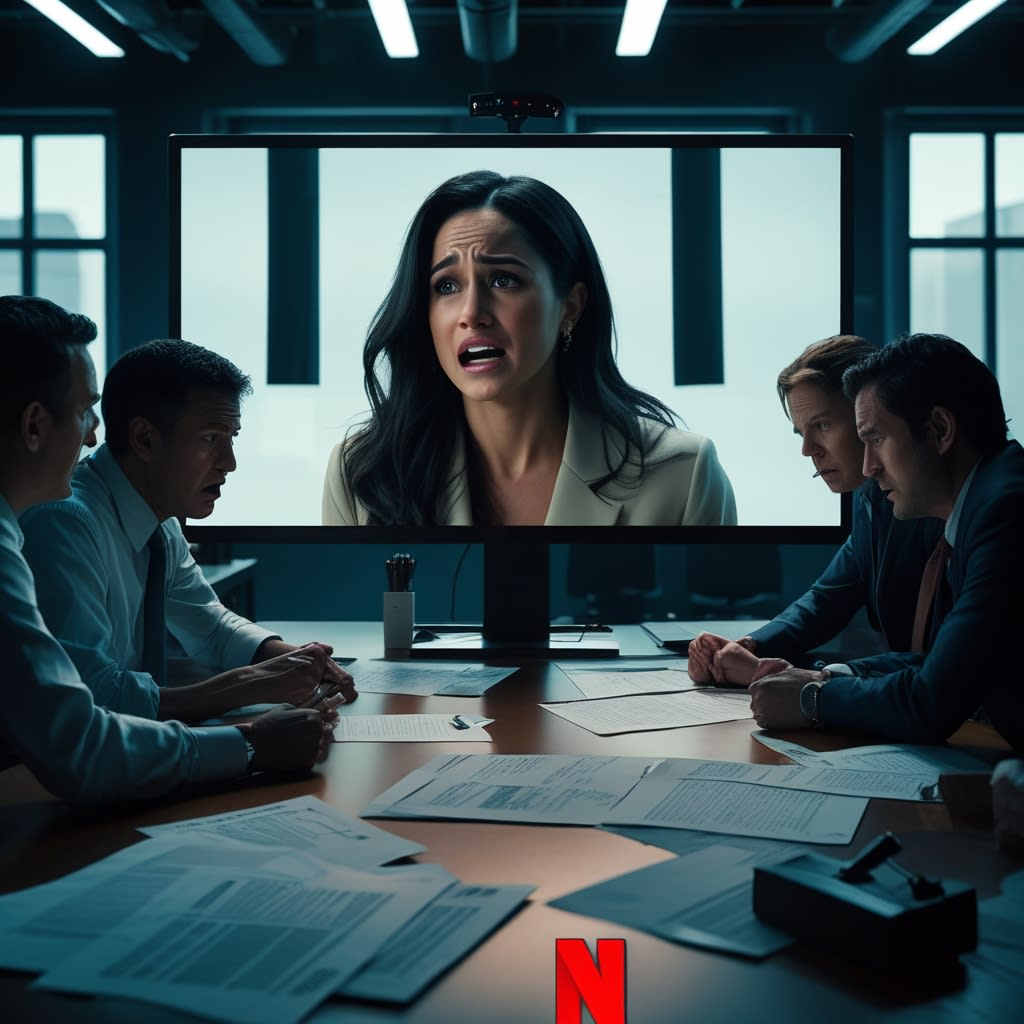Netflix thought it had struck gold. A royal turned Hollywood insider. A global fanbase. A narrative of resilience and reinvention. When the streaming giant inked a multi-million-dollar deal with Meghan Markle, expectations were sky-high. The project—titled With Love, Meghan—promised an intimate glimpse into Meghan’s post-royal life. It was billed as raw, emotional, and unfiltered. What Netflix received, however, was something else entirely: a choreographed spectacle that ultimately left audiences cold and executives questioning their own judgment.
At the heart of the backlash was the realization that With Love, Meghan wasn’t a documentary. It was a performance. One early scene, which featured Meghan reading to children at a local literacy center, appeared heartwarming—until behind-the-scenes sources revealed those weren’t local kids. They were child actors. The volunteers? Meghan’s own staff, costumed to appear as everyday helpers. Even the donations made during filming were quietly returned afterward. It was all carefully staged for the cameras.
This kind of manipulation violated the most basic tenets of documentary ethics. Netflix executives, who expected authenticity, were stunned. The deeper they reviewed the footage, the clearer it became: this wasn’t real life. It was image management.
Worse still, legal alarms began to sound. One unreleased segment reportedly featured Meghan making serious accusations against a senior royal without any corroborating evidence. Netflix’s legal team quickly flagged the scene as defamatory, ordering it pulled from the final cut. But the damage was already done—the trust between Netflix and Meghan’s production had begun to erode.
Insiders painted a chaotic picture of the production environment. Crew members described a toxic set dominated by Meghan’s micromanagement. She reportedly dictated lighting angles, rewrote scenes on the fly, and rejected any footage that didn’t align with her self-crafted image. Editors were allegedly instructed to cut any clip where she didn’t appear powerful or graceful.
One editor described the experience as working on “a documentary by dictatorship.” Conflict resolution teams were brought in. Staff morale plummeted. Key crew members left. The show’s second season, once enthusiastically planned, now had no willing team to execute it.
Perhaps the most unsettling revelation came from the editing room. A scene where Meghan was shown tearfully holding one of her children’s toys—meant to depict the emotional toll of motherhood—was revealed to be entirely manufactured. The crying audio was added in post-production. The lighting was digitally softened. Meghan hadn’t shed a single tear. It wasn’t vulnerability. It was visual fiction.
And viewers noticed.
When With Love, Meghan finally aired, curiosity drove early views. But interest dropped dramatically by episode three. Netflix’s internal data showed over 60% of viewers didn’t finish the series. Social media platforms lit up with complaints, calling the show “fake,” “forced,” and “emotionally manipulative.” Even longtime Meghan supporters admitted it felt more like a PR campaign than a documentary.
Then came the corporate fallout. A leaked internal memo from Netflix’s senior team reportedly stated, “We can no longer treat Meghan Markle as an asset. She is now a reputational risk.” The memo advised halting future collaborations, reviewing legal risks in all current footage, and quietly scrubbing anything problematic.
The deeper the legal team looked, the worse it got. Questions arose about scenes involving Meghan’s children. Were those actually her children on camera? Were proper permissions obtained? In several instances, documentation was missing. Child protection compliance experts flagged the footage for immediate removal. Suddenly, what was meant to be heartwarming family content became a potential liability.
Big-name guests who were expected to join the series—Oprah Winfrey, Serena Williams, Michelle Obama—quietly withdrew. Rumors swirled that they were uncomfortable with the direction of the show. Behind closed doors, Meghan’s reputation in Hollywood had begun to shift. Producers whispered that she was difficult to work with, overly controlling, and resistant to any input.
One executive reportedly said, “What we thought would be a powerful voice turned into a one-woman image crusade.”
The final blow? Allegations of plagiarism. One emotional story Meghan shared about racial profiling at a grocery store was exposed by online sleuths as nearly identical to a Reddit post from 2017. Side-by-side comparisons showed the same wording, tone, and sequence. It was presented as her own experience. The story’s authenticity crumbled. Additional checks found more stories and metaphors lifted from blogs, articles, and social media.
The fallout for Netflix was swift. Shareholders raised concerns. Subscription numbers dipped by over 200,000 that quarter. Brand trust surveys showed a sharp decline. Internally, staff questioned how such a high-profile project could fall apart under so many layers of oversight.
And Meghan? The silence from her allies was deafening. Former supporters distanced themselves. Sponsors paused deals. Even the tabloids stopped chasing her scandals—instead, they began mocking her missteps. She wasn’t irrelevant. She was, as one critic put it, “exhausting.”
Ultimately, Netflix cut its losses. With Love, Meghan was buried with minimal press. There were no promotional follow-ups. No redemption arcs. Just silence. What had begun as a reintroduction to the world became a masterclass in how not to control a narrative.
The cameras may still be rolling somewhere—but for Meghan Markle and Netflix, the audience has already walked away.
